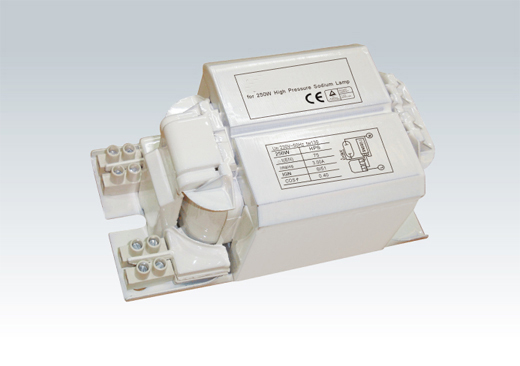Traditional metal halide lamps (also called "probe start"), and high-pressure mercury vapor (HPMV) lamps utilize an auxiliary electrode to facilitate starting. MH lamps use probe-start, electromagnetic ballasts technology, which employs the use of two operating electrodes and a third, starting probe electrode in the arc tube.
Market demand for probe-start ballasts began to wane once industry realized the third electrode and other moving parts such as the switch led to inconsistencies in the lamp’s lumen and color output over their lifetimes.These lamps are filled with a relatively low pressure of argon gas. Breakdown occurs when several hundreds of volts are applied. The lower the fill pressure, the lower the breakdown voltage and less electrode heating occurs in the subsequent glow mode. Without enough electrode heat the arc mode will not develop. There is a trade off of breakdown voltage and GAT with fill pressure for these lamps. For most mercury vapor lamps sinusoidal output voltages around 220 Vrms suffice. For most metal halide lamps, highly peaked (distorted) output voltages around 300 Vrms suffice. Failing to attain a GAT will destroy lamp electrodes in less than 100 hours.

Metal Halide Ballasts | High Pressure Sodium Ballasts | Fluorescent ballasts | Gear Tray
Links: Porcelain lamp socket | Mercury Vapor Ballast | Light bulb socket
Xml Copyright: @2012-2020 James Lighting Electronic Co.,Ltd